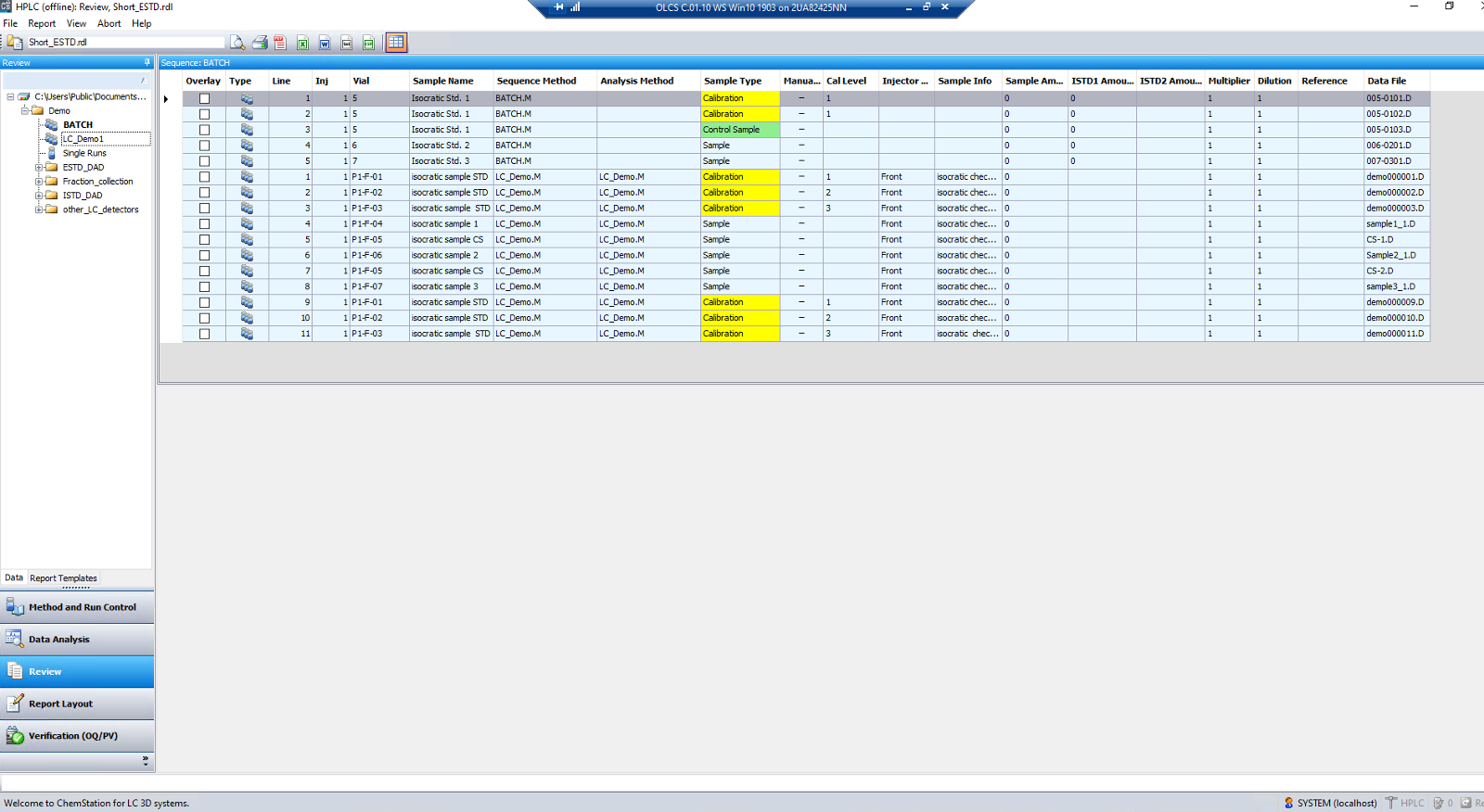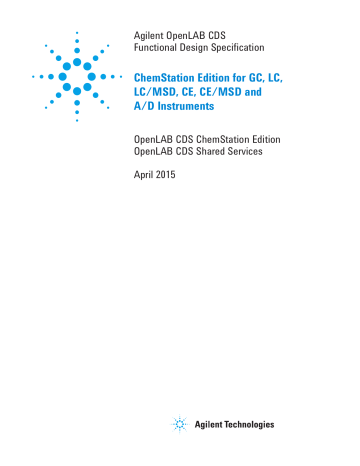
Additionally, the concentration range where the analyte and internal standard chromatographic peak area is a linear function must be known, as only then, the constant value of the response factor is ensured. When using the internal standard method, the response factor value needs to be known in order to arrive at reliable analytical results. The same applies to the external standard method. The absolute calibration and standard addition methods include analysis of two separate samples which often introduces significant errors into the results. Unlike the absolute calibration and standard addition methods, pure analyte standard is not required. The internal standard method has several significant advantages. This ratio is called the response or calibration factor : where F R is the response factor, A CWA is the CWA chromatographic peak area, A ISTD is internal standard chromatographic peak area, c CWA is the CWA concentration in the solution, and c ISTD is internal standard concentration in the solution. This method is based on the fact that within a certain concentration range, the ratio of chromatographic peak areas and concentrations is constant.

Therefore, we had to turn our attention to a procedure based on an internal standard, i.e., addition of a known amount of a substance different from the analyte into the sample, to determine these substances. The fundamental issue is that pure and certified CWA standards are not available in the Czech Republic. Usually, quantitative analysis is performed by the absolute calibration method on these machines, but only for those analytes where a standard of corresponding purity is available. Three types of systems are used in the FRS: GC/MS 7890A/5975 (Agilent), GC/MS Intuvo 9000/5977B of the same manufacturer, and EM 640 (Bruker Daltonik). All laboratories are equipped by gas chromatography with mass detection (GC/MS) as most frequent analytical systems. This activity is ensured by specialized FRS chemical laboratories. The countermeasures include chemical reconnaissance, detection, identification, and determination of CWAs. IntroductionĪccording to the Czech Republic law, competences of the FRS include chemical countermeasures in case of CWA spills or abuse. The determination can be performed on all GC/MS systems of the Fire Rescue Service of the Czech Republic (FRS), where no CWA standards are available. Linearity, repeatability, and accuracy of the measurements were evaluated. Corresponding response factors were determined as a ratio of gradients of the linear functions of the peak area and compound concentration. Available internal standards were identified, and they were verified for seven organophosphorus nerve-paralysing agents. The determination is based on a GC/MS analysis of a mixture of a CWA with an internal standard, conversion of the TIC chromatogram to a chromatogram extracted at a particular m/ z ratio, and calculation of the CWA concentration from the internal standard concentration, response factor, and chromatographic peak areas.

The results raise some doubt as to whether MMA is a significant metabolite in urine of people exposed to arsenic concentrations below 20 µg L −1 in their drinking water.General conditions and requirements for an internal standard useful in the determination of chemical warfare agents (CWAs) by the method of gas chromatography coupled with mass detection (GC/MS) were defined.

No MMA was detected even in samples analyzed within 6 hours after collection.

The DMA was detected in 99.2% of samples, AsB in 98.2%, MMA in 73.4%, As in 45.0%, and As in 27.1%. The procedure was used to measure the six arsenic species in urine samples from 387 individuals in southeast Michigan who are chronically exposed to slightly elevated levels of arsenic in their drinking water. The ability to quantify the six species in a given sample depended on the low detection limits of the method-0.06 µg L −1 for AsB, 0.11 µg L −1 for As, 0.08 µg L −1 for DMA, 0.12 µg L −1 for MMA and 0.15 µg L −1 for As. The method was evaluated with regards to changes in mobile phase, accuracy and precision. We present a High Performance Liquid Chromatography-Inductively Coupled Plasma- Mass Spectrometry ( HPLC-ICP-MS) method that has been optimized to reliably measure the following six arsenic species in human urine: As, arsenate (As), monomethylarsonous acid (MMA), monomethylarsonic acid (MMA), dimethylarsinic acid (DMA) and AsB. Many methods that have been used to speciate arsenic metabolites in urine are unable to adequately resolve the chromatographic peaks for arsenite (As) and arsenobetaine (AsB).


 0 kommentar(er)
0 kommentar(er)
